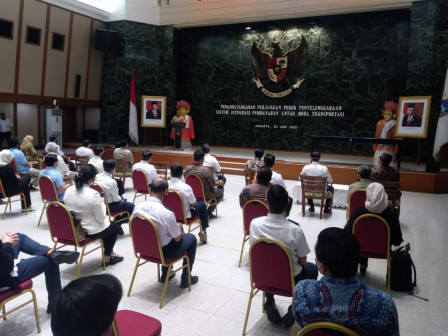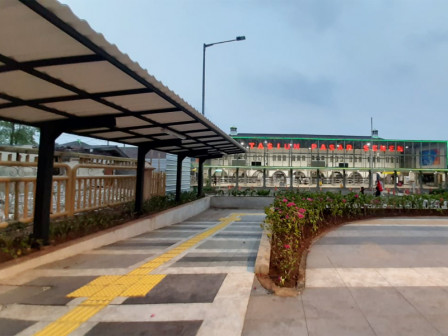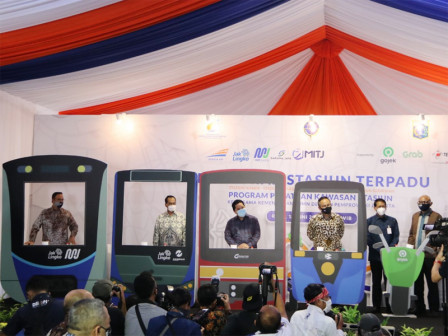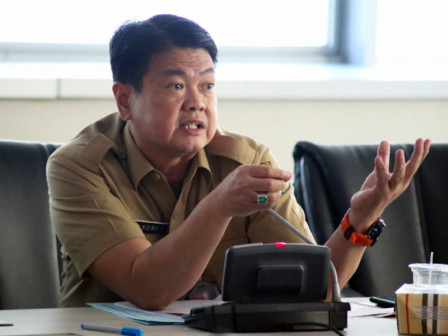BUMN Collaboration, City Eyes Inter-modes Payment Integration System
Reported by Folmer | Translated by Nugroho Adibrata
After passing through the inauguration of the four busy commuter line stations sometime ago, PT Transportasi Jakarta, the PT MRT Jakarta (MRTJ), PT Transportasi Jakarta (TJ) and PT Jakpro together with PT Moda Integrasi Transportasi Jabodetabek (MITJ) began to explore an inter-modes payment integration system.
The point is with this integration, we can attract more customers
This collaborating was outlined in the signing of the Head of Agreement (HOA) for the operation of inter-modes payment integration system in Great Hall, on Tuesday (6/30).
Its signing was attended by Jakarta Governor Anies Baswedan, Vice Governor Ahmad Riza Patria, BUMN Vice Minister Kartiko Wirjoatmodjo, as well as representatives of Transportation Ministry and officials under Jakarta Provincial Government.
Residents Welcome Makeover of Four Commuter Line Stations in JakartaIn his speech, the governor reaffirmed the importance of all parties to collaborate in providing integrated mass public transportation services. Besides the mode, they should also focus on the tariff and its payment system for more efficient in terms of transportation users.
"It is impossible for public transportation to be managed individually, but must be integrated. The point is with this integration, we can attract more customers. Our target is to return to the situation of 98 where the share of public transport users on the highway is 75 percent," he expressed, as quoted by Jakarta PPID's press release.
He appreciated the collaboration yet he also reminded that the payment system mechanism must continue to lead to social justice, which makes payment integration system services accessible to the whole society.
Hopefully it was able to realize subsidies that are more targeted thus the public feels a more economical rate for using mass public transportation services.
"The cost of living in Jakarta is quite high and one of the big components is the cost of transportation, when costs can go down then they can save more money. If they can do that, their independence will be higher," he explained.
In this agreement, they had agreed to form a Joint Venture Company in which three BUMDs (MRTJ, TJ, and Jakpro) have a 20 percent stake, while MITJ has a 40 percent stake.
They would appoint a consultant to conduct a study related to intermodal payment integration systems that is most appropriate for Greater Jakarta.
Further, they were also scheduled to conduct a beauty contest to choose a Strategic Partner, who will work with joint ventures in realizing the integration of payments between modes of transportation. This integration would use the Electronic Fare Collection (EFC) method.





